Project details
Skill
Cost
Estimated Time
Planting a tree to enhance your outdoor space might seem simple, but there are certain small details to which you must pay attention. If you want your tree to stay healthy year after year, you need to mark the ground with precision, measure the height of your tree’s root ball carefully, measure the depth of the hole precisely, and set up irrigation bags. Read our guide below for tips on how to plant a tree so that it lasts for years to come.
Steps To Planting a Tree Yourself:
Planting a Tree
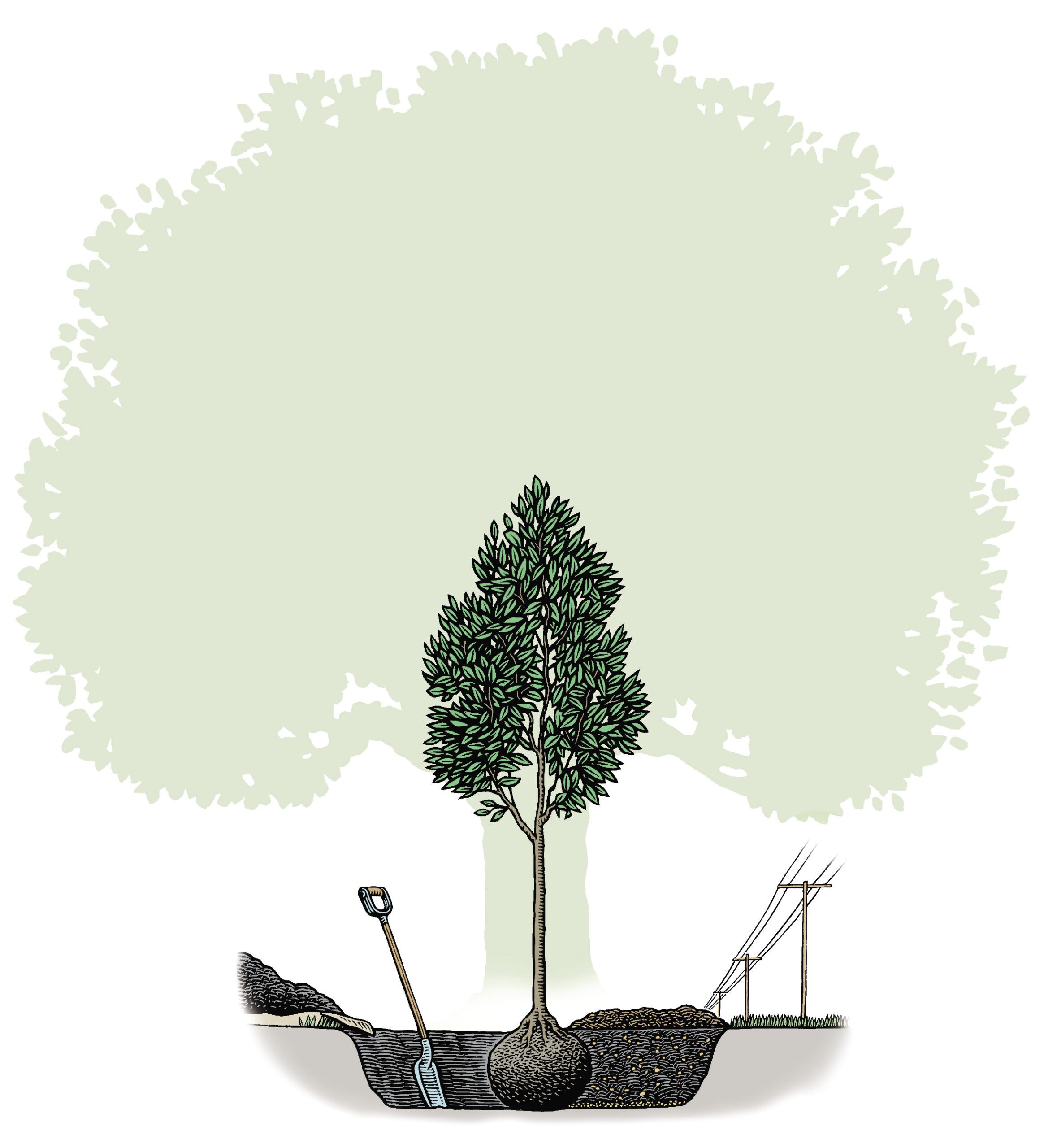
You can plant a tree in just a few hours with a shovel, tape measure, and garden hose. You must be patient and diligent, though. Even professionals make the mistake of burying the entire root ball too deeply or not watering the tree sufficiently after planting. Follow the steps below to plant the tree correctly.
Mark the Ground

The first step in planting a tree is to choose the best location. Consider the factors below when you’re deciding where to put your tree:
- Distance from structures: Keep the tree at least 15 feet away from your house, sidewalk, driveway, and other trees to allow the tree to grow properly and prevent damage to pavement.
- Overhead clearance: Be aware of power lines, and make sure the spot you choose allows space for the tree to reach its full height.
- Sunlight and soil conditions: Consider how much sunlight the tree needs and which soil is best.
Once you’ve determined the perfect spot, follow these steps:
- Drive a stake into the ground at the location you’ve chosen.
- Measure the diameter of the tree’s root ball.
- Use bright spray paint to mark a circle around the stake that’s twice as wide as the root ball.
Measure the Height of the Root Ball
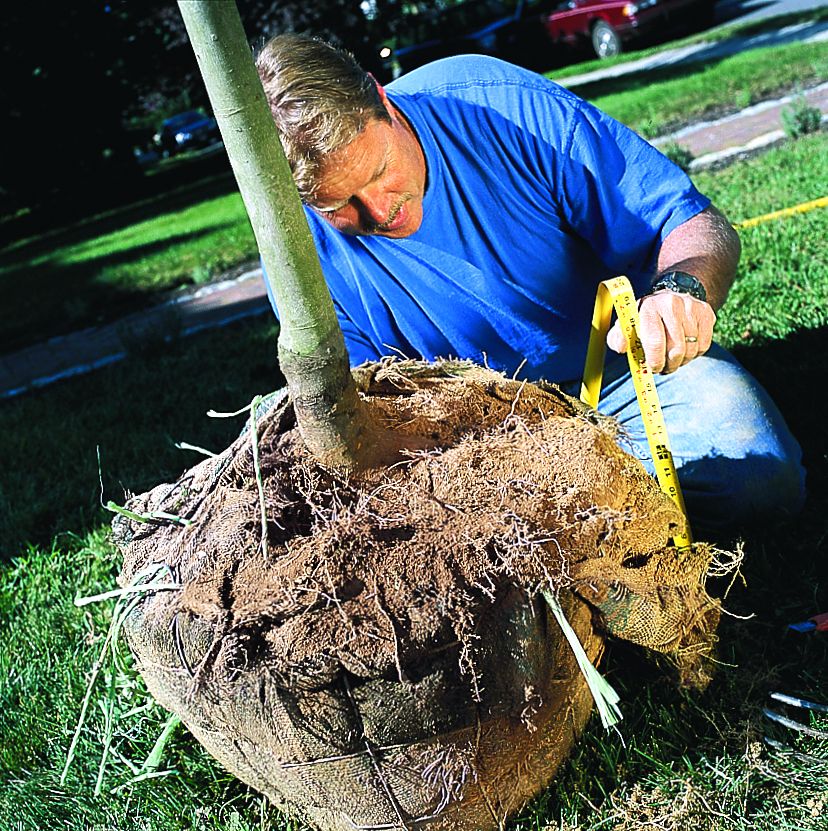
Follow the steps below to correctly measure the root ball, which will help you determine the correct planting depth.
- Stand the tree upright and untie the burlap from around the base of the trunk. Do not untie the burlap beyond the root flare. Keeping the root ball intact helps the tree to stay stable while you plant it.
- Use a cultivator or garden trowel to carefully remove soil from the top of the root ball so that it exposes the root flare.
- Measure the root ball’s height from the ground to the top of the root flare.
Dig the Hole

Digging the hole correctly will help you to plant the tree properly. Follow the steps below.
- Subtract 2 inches from the root ball’s height to determine the depth of your hole. This will allow the root flare to sit slightly above ground level, and will prevent roots from becoming buried.
- Use a pointed shovel to cut through the grass around the perimeter of the outline you’ve painted.
- Remove the grass and discard it or move it somewhere else. Don’t use it to backfill the hole.
- Spread a plastic tarp beside the hole and place the soil you’ve removed onto it. This will make the hole easier to backfill later, and will prevent damage to the surrounding lawn.
Keep the bottom of the hole firm to prevent the tree from sinking after you plant it. This will also establish a stable base from which the plant can grow.
Measure the Depth of the Hole

Follow the steps below to accurately measure the depth of the hole. The correct depth will minimize stress on the tree and help it grow.
- Drive a stake or your shovel into the ground beside the hole.
- Tie a string to the stake at grass level.
- Pull the string taut across the hole and measure down to the bottom.
- Remove soil until you reach the depth you want, which should be 2 inches less than the height of the root ball.
- Use the shovel to create a flat bottom in the hole.
- Apply superphosphate to the bottom of the hole according to the package’s instructions. This will promote healthy root development.
Position the Tree

Follow the steps below to properly position your tree, which will allow it to thrive and maximize its aesthetic appeal. Have a helper support the tree while you move it.
- Carefully move the tree into the hole by carrying it or gently rolling it.
- Have a helper slowly rotate the tree while you stand back to view it from different angles. Make sure it looks balanced in its new setting.
- Identify the tree’s best face and position it toward the most prominent direction. This is typically toward the street.
- Use bolt cutters or metal snips to remove the wire basket from the root ball.
Loosen Densely Packed Soil
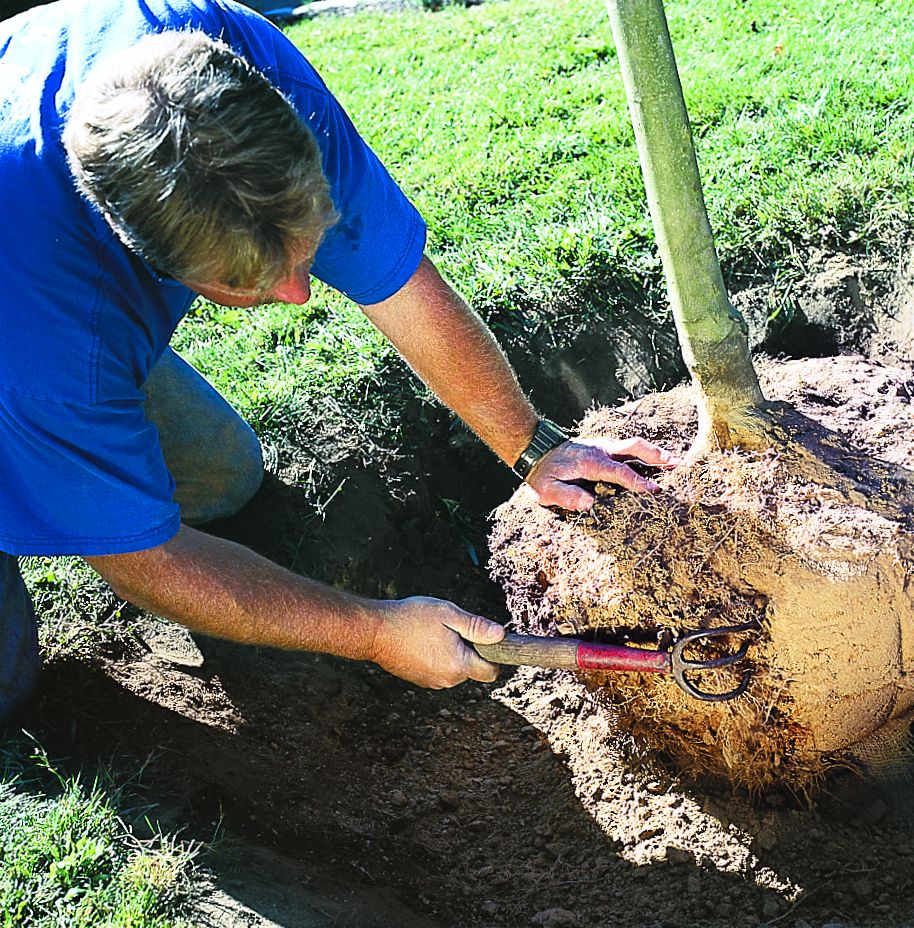
Follow the steps below to loosen the soil around the root ball. This will promote root growth and help you to more successfully establish the tree.
- Remove any remaining twine from the root ball.
- Carefully peel away the burlap. Leave only the bottom portion if it’s difficult to remove completely.
- Use a cultivator to gently loosen the soil around the root ball, which will expose the smaller roots.
Proper soil aeration helps the root system to grow and nourish the tree. Be careful not to damage the roots during this process.
Backfill the Hole
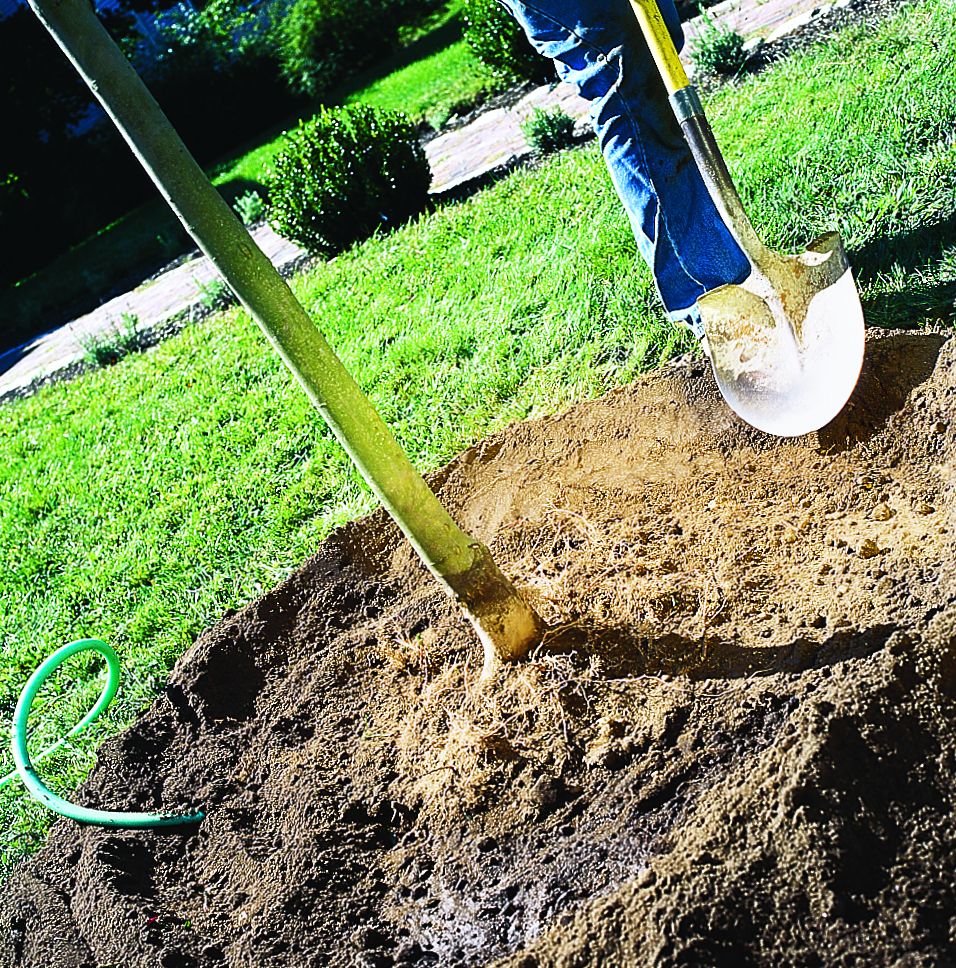
Follow the steps below to properly backfill the hole, which will stabilize the tree:
- Mix superphosphate and a balanced 3-4-3 fertilizer into the excavated soil pile. Follow the package’s recommendations for your tree’s size.
- Thoroughly combine the mixture with the soil.
- Begin shoveling the mixture back into the hole. Do not bury the root flare.
- Gently tamp down the soil, but avoid compacting it too much.
- When you’ve filled the hole, use the shovel’s blade to create a 6-inch-high earthen berm around the tree’s drip line.
- Use a garden hose to fill the resulting basin with water. Allow it to seep into the soil slowly.
- Once the soil has absorbed the water, carefully knock down the berm and smooth out the soil’s surface.
The soil around your tree should remain loose but firm. This will foster an ideal growing environment.
Set Up Drip-Irrigation Bags
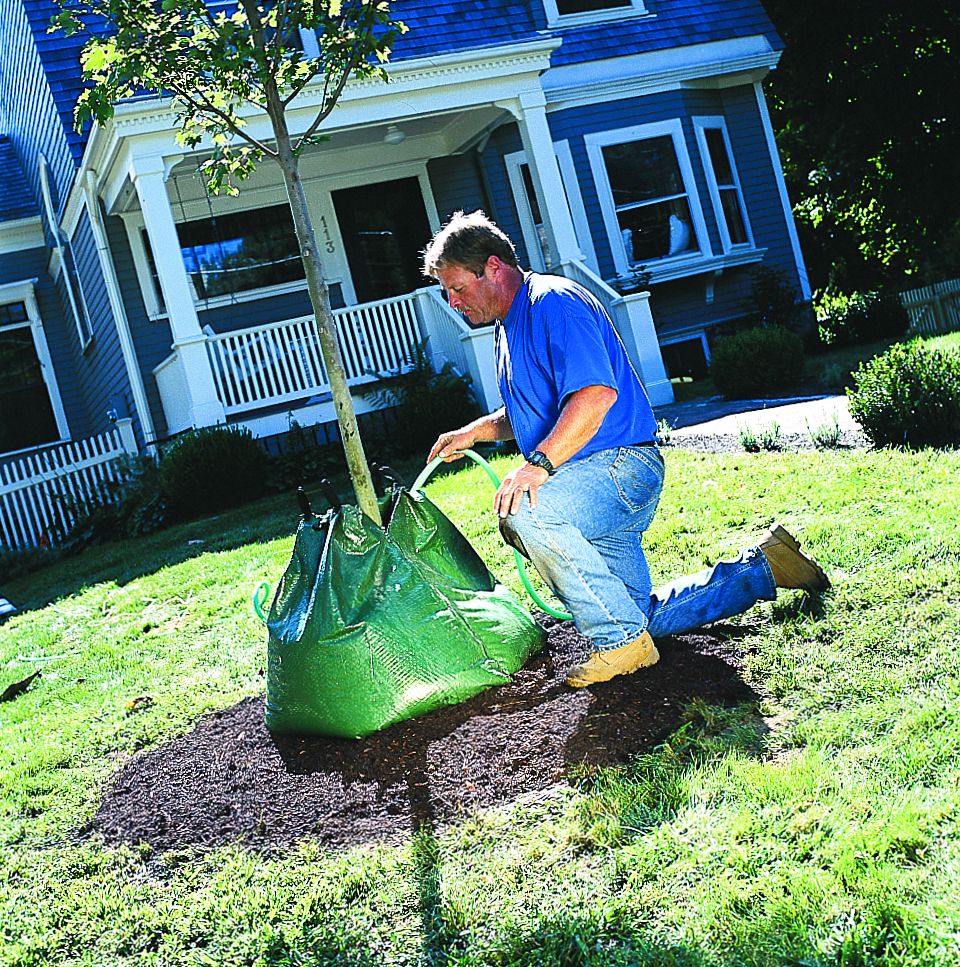
You must water the new tree to keep it healthy. Drip-irrigation bags allow the tree to stay hydrated consistently and at even intervals. Follow the steps below to establish a watering routine:
- Spread a 3-inch layer of bark mulch over the soil around the tree, but keep it away from the trunk to prevent moisture-related issues and rot.
- Loosely tie two drip-irrigation bags to the tree trunk.
- Fill each bag with water.
- Refill the irrigation bags daily, or as needed, for 6 to 8 weeks.
If you don’t use drip-irrigation bags, water the tree thoroughly every day for at least 6 weeks, and keep the soil moist, but don’t let it become waterlogged.










